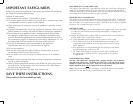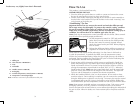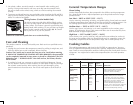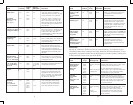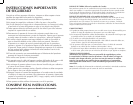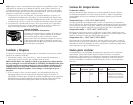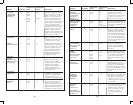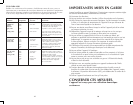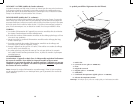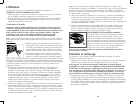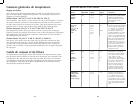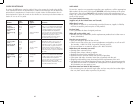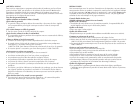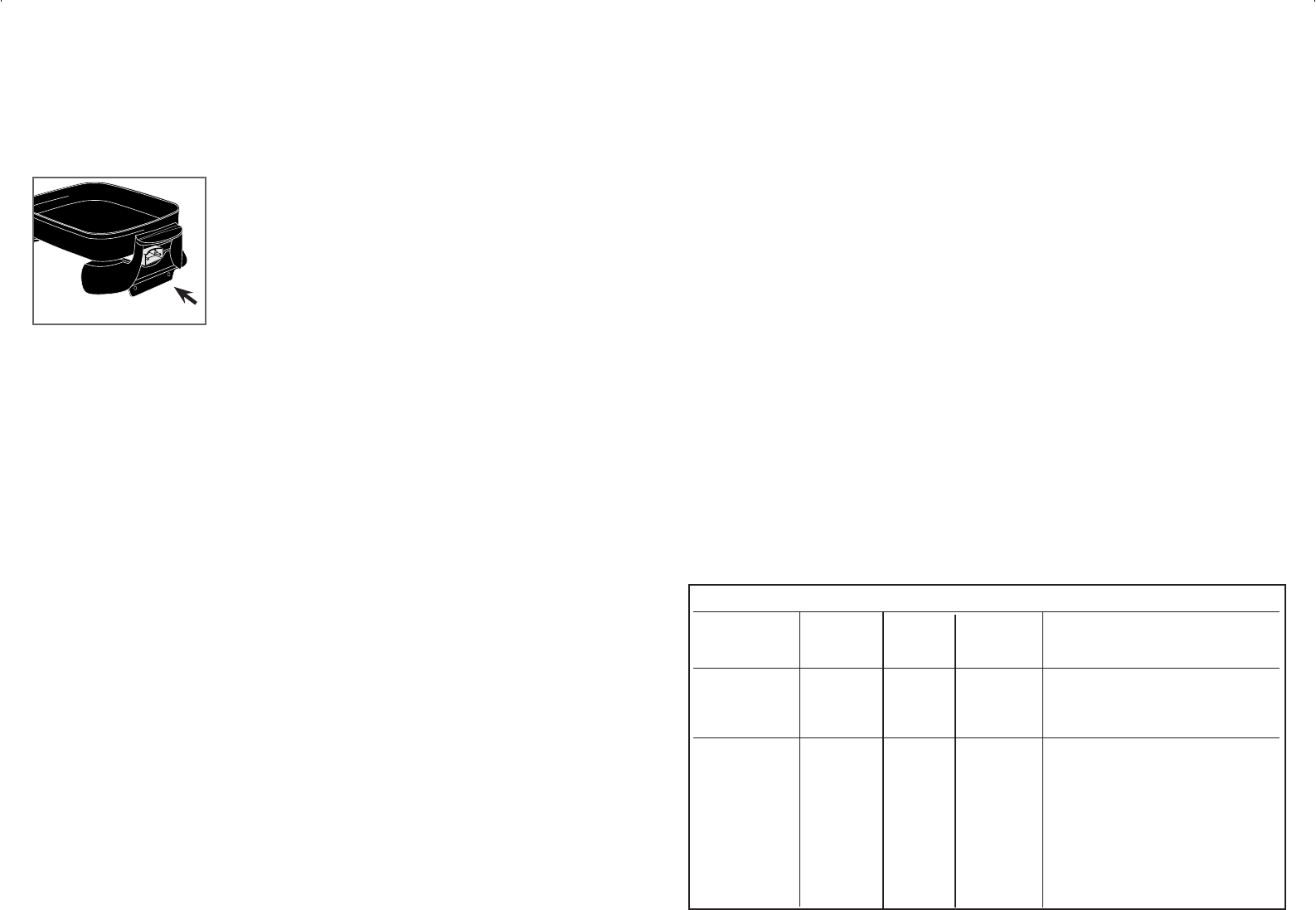
5. Use plastic, rubber, nonstick coated, or wood utensils when cooking and
serving. If using metal utensils, take care not to dig into the nonstick finish.
Do not cut food on the surface using a knife to avoid scratching the nonstick
coating.
6. To prevent accidental burning, use pot holders when touching the lid and lift it
only by the top handle. Use pot holders and extreme caution when moving the
skillet if it contains hot liquids.
The tilt-leg raises one side of the skillet slightly so that
oils, fats, or other liquids will drain to the opposite side
as they collect. This feature is great for pan broiling and
basting foods while cooking. To use, pull the Leg straight
down so that it stands under the handle . Be careful
not to pull too far as you may break it.
This product contains no user serviceable parts. Refer service to qualified service
personnel.
1. Unplug the cord, remove the temperature control by pulling it straight out, and
allow the skillet pan to cool completely before cleaning.
2. If washing by hand, use a sponge or nylon pad with liquid detergent. Do not
use any abrasive cleaners, coarse cleansers, or metal pads as they may damage
the nonstick coated surface. After washing, dry the pan thoroughly giving
special attention to the socket area. Do no use metal pads to clean electrical
pins.
Used to keep foods that have been prepared in the skillet at serving temperature
for a short period of time. Adjust temperature up to keep foods warm for longer
periods of time.
Use for warming, simmering, steaming, and gentle boiling. Some foods are started
at higher temperatures then reduced to low heat to finish the cooking process. Use
for cooking special dessert sauces, such as Cherries Jubilee, and puddings.
Use for eggs, bacon, and sausage, or to sauté vegetables such as onions, green
pepper, or mushrooms. Also to cook roasts and other cuts of meat after they have
been browned at higher temperatures.
Use to brown, sear, pan fry (with fat), and pan broil meats without fat and to stir
fry meats and vegetables (with fat). Breaded foods such as vegetables, meats, fish,
and poultry are pan fried in this temperature range with a small quantity of fat.
The cooking temperatures and times in the GUIDES are approximate. You may
have to adjust them depending on food size, quantity, temperature, and personal
taste. Foods at room temperature need less cooking time than foods taken from the
refrigerator. You might need to reduce the temperature/time for small quantities
of food.
No 325°F 10-12 Place in COLD skillet. Separate slices
163°C when positioned in pan. Turn as
necessary. Drain on toweling.
Yes 400°F 20 Dredge chicken pieces in mixture of
204°C
1
⁄2 cup flour, 2 tsp. salt, 1 tsp. paprika,
Brown
1
⁄4 tsp. pepper. Preheat at 400°F (204°C).
Add 2 tbsp. oil; brown chicken, meaty
325°F 30-40 side first, turning once, for about
163°C 20 mins. Reduce temperature to 325°F
Finish (163°C); cover, with vent open, and cook
30-40 mins. or until chicken is tender.
Turn occasionally during cooking.




